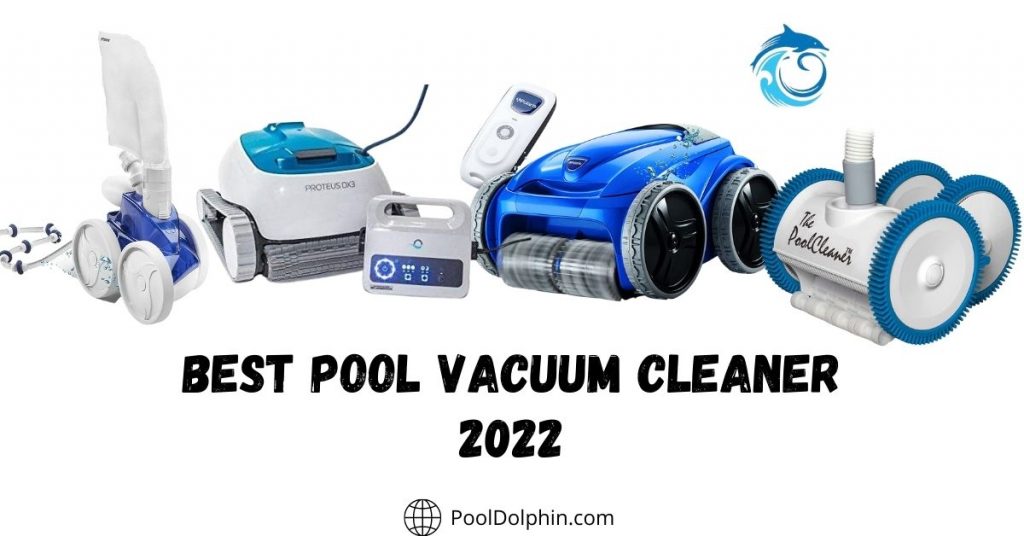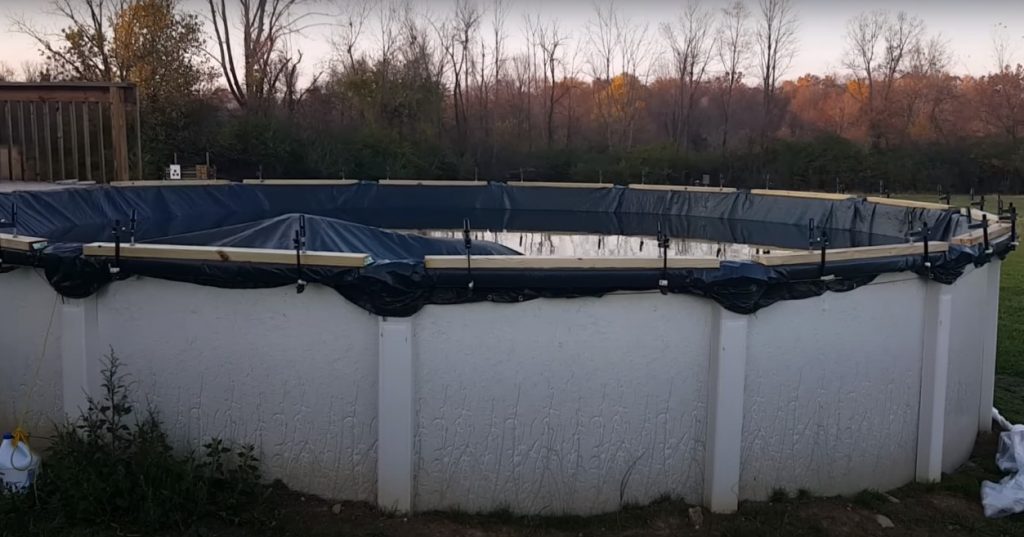If your free chlorine level is lower than 1 ppm (parts per million), you need to take action to raise your chlorine levels. Chlorine levels at or below 1 ppm mean your pool water isn’t sanitized, which can lead to algae growth and bacteria build-up.
But what if you’ve added chlorine tablets or granules and the levels still won’t change? How do you raise free chlorine in a pool if you’ve already added chlorine?
Chlorine levels that are low (1ppm) or not reading at all (0ppm) require shocking the pool with a chlorine based shock. If after shocking the pool, the chlorine levels continue to remain low, then it’s likely that you have a high chlorine demand issue.
What is Free Chlorine?
Free chlorine is a crucial component of keeping your pool water clean and sanitized. It’s the chlorine that hasn’t been used up and is still available to kill any contaminants present.
If there isn’t enough free chlorine in the water, bacteria and other harmful microorganisms can quickly build up. Your free chlorine levels should ideally be between 1 and 3 ppm.
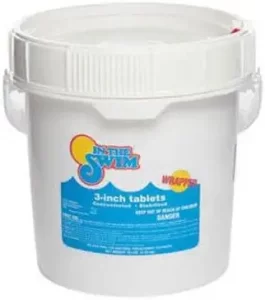
Combined Chlorine
When you add the free chlorine to the water, it works to oxidize and eliminate contaminants such as nitrogen and ammonia. But as the chlorine combines with these pollutants, it is used up and weakened in the process.
This is how combined chlorine is formed – though its ability to sanitize the water will be reduced in comparison to free chlorine.
Total Chlorine
In short, total chlorine is a measure of both free chlorine and combined chlorine in pool water.
Combined chlorine is only necessary when free chlorine levels are lower than total chlorine levels – in this case, the difference between the two is called the combined level of chlorine.
What is the right amount?
If you want to adjust your swimming pool water properly, you need to do something called ‘breakpoint chlorination’. This will raise the chlorine levels in your pool water so that it’s effective at killing germs and disinfecting the water.
This is really important to help keep swimmers safe and make sure the pool water is clean.
Here is where total chlorine comes into play. As you know, free chlorine + combined chlorine = total chlorine. By subtracting the amount of free chlorine from the total chlorine, you can get your combined chlorine level.
This figure is what is known as ‘chlorine demand.’
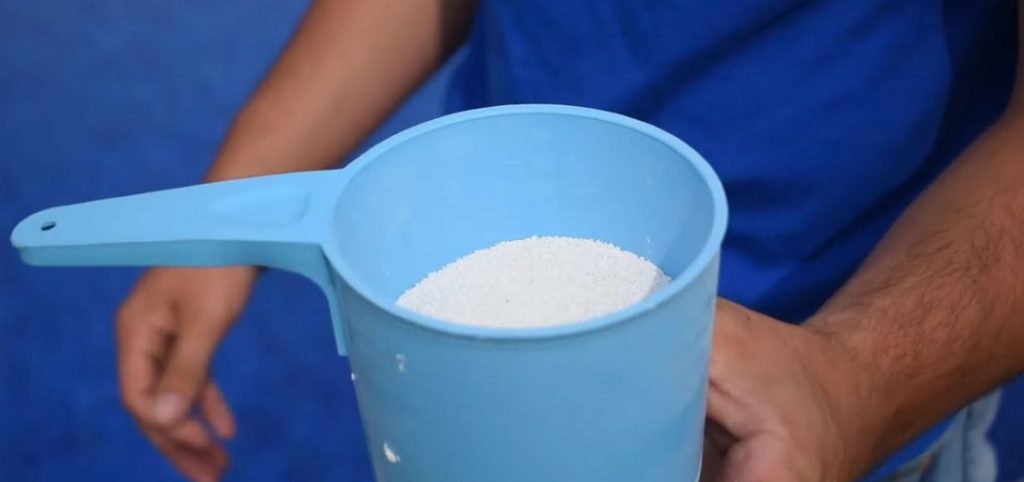
It’s important to know the chlorine demand for your backyard pool so that you can add the right amount of chlorine to maintain a healthy pool. To calculate the right dosage, you will need to multiply the chlorine demand by 10.
In reality, multiplying the chlorine demand by 7.6 should be suffice – but this is only if you know how to raise free chlorine in a pool. Many pool professionals will use a higher ten times multiplier to be on the safe side and ensure that there’s enough chlorine in the pool.
Additionally, it’s important to know that you have to properly match total chlorine to free chlorine. They also realize that it’s much better to have a little extra chlorine in the swimming pool than too little.
What Causes Low Free Chlorine Levels?
There are several factors that can contribute to sudden or chronically low free chlorine levels in your pool. The first step in raising the free chlorine is to identify what caused the drop. Common causes include sunlight, heavy rains, backwashing, and swimmers.
High Chlorine Demand
Chlorine is a powerful sanitizer, but it can only do so much on its own. If you have a lot of swimmers or debris in your pool, you’ll need more chlorine to keep the water clean. The more contaminants you have in the water, the more chlorine your pool will need.
Chlorine demand is most common when your pool water sits untreated for a long period of time, such as during the winter. Heavy rainfall can also lead to chlorine demand, especially if you live in an area with a lot of runoff from nearby yards.
If you’ve just added chlorine or a chlorine-based shock to your pool and you still have a low chlorine level, there’s a good chance you have a chlorine demand problem.
Chlorine demand can be cured by adding calcium hypochlorite or cal-hypo shock to your pool. For every 10,000 gallons of water in your pool, add three pounds of shock.
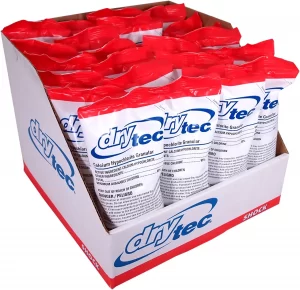
| Dimensions | 24 x 12 x 6 inches |
|---|---|
| Item Weight | 24 pounds |
| Manufacturer | Robelle Industries |
Heavy Pool Use
If you have more swimmers in your pool and use it more often, you’ll need more chlorine to fight contaminants. Things like sunscreen, dirt, and oil from your skin can build up over time and make your chlorine work harder.
To keep your free chlorine levels high and your water sanitized, shock your pool weekly and after parties.
Sunlight and Low Cyanuric Acid Levels
Unstabilized chlorine (liquid chlorine or bleach) is less effective in sanitizing water because the sun’s rays will break it down over time. This is a problem if you’re trying to maintain a certain level of chlorine in your pool or spa, for example.
To avoid this, make sure you use chlorine that has been stabilized with a chemical agent.
Make sure to test your cyanuric acid levels regularly, and use a chlorine stabilizer to keep your chlorine from being broken down by sunlight.
Very High Cyanuric Acid Levels
When your cyanuric acid (CYA) levels are higher than they should be, it hampers your chlorine’s effectiveness in keeping your water clean. A high cyanuric acid level will weaken your chlorine’s ability to sanitize.
If you use 3-inch chlorine tablets (trichlor pucks), it will raise your cyanuric acid levels.
To make sure your chlorine is working properly, test your CYA levels regularly and keep them within the range of 30 and 50 ppm.
Increased Organic Contaminants
After a heavy rainstorm, it’s important to clean any debris from your pool and shock the water to get rid of contaminants.
Runoff from the storm can quickly increase the amount of contaminants in your pool, and that can use up your free chlorine quickly as it binds to everything in an effort to sanitize the water.
So be sure to clean up after a storm and shock your pool to keep it safe and clean for everyone to enjoy.
Refilling the Pool with Fresh Water
If you’ve just added fresh water to your pool, it could mean that your water chemistry is off. More fresh water means that there is less sanitized, balanced water with the proper amount of pool chemicals.
Not Adding Enough Chlorine
One of the main reasons for low free chlorine levels is an insufficient amount of chlorine being added to the water on a regular basis. If you’re using chlorine tablets in your pool skimmer but your pump turns off, the chlorine won’t have a chance to enter the water.
Also, if you’re using a chlorine floater, be sure that there’s enough chlorine in it to cover the entire surface area.
Not Enough Salt in Your Salt Water Pool
If you use a saltwater generator and your chlorine levels are low, your pool may not have enough salt. Your salt cell needs a certain level of salinity to function.
You should test your pool’s salinity every month to ensure that your salt levels are where they should be. Additionally, be sure to inspect your salt water generator on a regular basis to make sure it’s in good working condition.
How to Raise Free Chlorine in a Pool
If your pool is full of debris and you haven’t cleaned it yet, chances are the free chlorine levels are low. This is because the chlorine is busy working on cleaning all the contaminants from the debris. To fix this, clean your pool and remove debris, then test the chlorine level.
To test the quality of your pool water, you’ll want to check the pH levels, alkalinity, and cyanuric acid levels to see if they are within the normal range. You can find helpful guides on pH and cyanuric acid levels if you need assistance in balancing the water chemistry.
After your pool is free of debris and the other levels are balanced, it’s time to shock the water by adding a high level of chlorine. This will raise the free chlorine levels to 10 times the normal amount.
There are many types of pool shock on the market, each with their own unique set of benefits and drawbacks. When choosing a pool shock, it’s important to consider how it will interact with other chemicals in the water, like your pH levels.
Keep in mind that using a non-chlorine shock will decrease your combined chlorine but it will not raise your free chlorine level. This is because the oxidation in a non-chlorine shock helps break up contaminents without adding chlorine.

For Traditional Chlorine Pool Owners
Cal-hypo is the strongest type of chlorine shock available, and it can help you quickly raise your free chlorine levels. Because cal-hypo shock is unstabilized chlorine, you’ll need to add it to your pool at night when the sun’s UV rays can’t destroy it.
Then wait at least 8 hours before swimming again. But if you suspect you have high chlorine demand (lots of contaminants and a reading of 0 ppm), you’ll need to triple shock your pool.
For Salt Water Pool Owners
Raise your chlorine levels by using Sodium Dichlor Shock; it’s an effective way to do so without causing any scale buildup on your saltwater generator.
However, keep in mind that it will also increase the levels of cyanuric acid (CYA) in the water. If the levels of CYA are already high, it’s best to use liquid chlorine instead.
What causes low free chlorine in pool?
chlorine is used up at a higher rate when there is excessive sunlight, high bather loads, improper water chemistry, increased organic activity, acid rain, or other biomatter in the pool.
Your pool might not have enough salt if you have a chlorine feeder, and this could also be due to a faulty chlorinator or salt cell. A low cyanuric acid (CYA) reading will cause low levels of free chlorine.
Why Should You Maintain Chlorine Levels in A Pool?
Some people may not see the importance in maintaining chlorine levels in a pool on a regular basis, but there are actually several reasons why this is crucial.
Chlorine keeps algae and bacteria from growing in the water, which can cause serious health problems for swimmers. Maintaining chlorine levels also helps to keep the water looking clean and clear.
Break Chloramine
When you use chlorine to sanitize your pool, it reacts with contaminants to form ammonia or nitrogen. These contaminants include chloramine, which reduces the effectiveness of chlorine.
If you don’t raise the chlorine level, chloramines will create a comfortable environment for germs. Some cloudy or milky chloramines will float at the surface of pool water. Over time, the pool will lose its sparkle and clarity.
Raise Sanitizer Level
One of the main reasons for adding chlorine to pool water is to increase the level of sanitizers. This is done by raising the free chlorine level in the pool, which is effective in killing germs.
Pool water can contain a high number of germs, especially if it’s used frequently. Therefore, it’s important to remove these germs before using the pool again. If they’re not removed, the microorganisms will have a chance to grow and multiply.
Get Rid of Algal Blooms
As mentioned earlier, pool water is an ideal breeding ground for microorganisms, and algae are among the most prominent pollutants. If the chlorine level is low, the algae can speed up their reproduction.
Pool Algae are concerning because they are very hazardous and unhygienic – risking the health of people who use the pool.
Algae can cause sickness in people who come into contact with it, so it’s important to keep an eye on the chlorine levels in your pool to ensure everyone’s safety.
Possible Methods to Raise Free Chlorine Levels
Now that you know how important it is to keep your chlorine levels up, you’ll need to use some methods to adjust the level. There are several techniques available that you can use in your pool.
Chlorine Tablets
For a pool owner, chlorine tablets are an easy and popular way to adjust the chlorine level in pool water. These tablets dissolve quickly in water and are made of Trichloroisocyanuric acid. They are also relatively low-cost and can be found at most stores.
But there are some disadvantages to using this technique. For one, these tablets are highly concentrated. If you don’t give enough time to stabilize the chlorine in pool water, it could burn your skin on contact.
If you find that your product is too acidic or corrosive, you can add some sodium bicarbonate to help reduce its acidity.
Granular Chlorine
Granular chlorine, also known as Sodium Dichloroisocyanurate, is a quick-dissolving form of chlorine that is often used when a pool needs a quick dose of chlorine.
The most significant advantage of granular chlorine is that it doesn’t affect the total alkalinity, which means that the pH level is always under control. However, it does come with a bit higher cost than chlorine tablets.
Granular chlorine is most effective when used in chlorinators, floaters, or feeders because of its quick-dissolving capability.
Liquid Shock
Hey, there’s no need to be anxious – it’s not like you’re about to get an electric shock! Granular and liquid shock contain the same chemicals which work to cleanse pool water.
Liquid chlorine, also known as Sodium hypochlorite, is more affordable than granular chlorine. As a general rule of thumb, 1 gallon of shock is appropriate for 10,000 gallons of water.
To begin, pour some liquid chlorine into the pool using a jug. Then, to avoid splashing, try adding the chlorine to the surface as close as possible. Finally, you can gradually move to the deeper end of the pool.
Powder Shock
It’s best to mix the powder with water before applying it directly to the pool as some of the shocks can dissolve very quickly. This is because not mixing it with water first can cause staining.
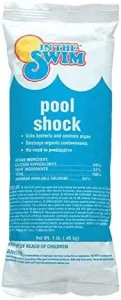
Salt & Mineral Chlorinator
The most common way to raise free chlorine levels in pools is by using a chlorinator. To do this, simply refill the chlorinator feeder with jumbo tablets and place it back into the pool. The pool will then be ready to be used again.
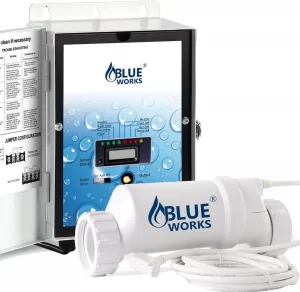
What if Your Free Chlorine Levels Don’t Change After Shocking?
There are several reasons why your free chlorine levels are still low after shocking your water. Some other pool chemicals might be out of balance, like pH or cyanuric acid.
This can cause your chlorine levels to fluctuate, so make sure these are balanced before shocking your pool. Another possibility is that there is a high contaminant load.
You may have a build-up of bacteria or algae that requires a more aggressive shock treatment. If your pool looks dusty on the bottom or clouds up when you brush it, it’s likely mustard algae.
FAQ For Free Chlorine in a Pool
Why is there no Free Chlorine in my Pool?
If your pool has a dusty appearance on the bottom, it may be due to an infestation of algae, fungus, or bacteria. These can deplete normal chlorine levels and occur without many visible signs. To test if this is the case, brush the pool bottom and see if the water becomes cloudy – this is most likely due to Mustard Algae.
Does Shock increase Free Chlorine?
“Shocking” is the term used to describe the process of adding chlorine or other pool chemicals to the water in order to raise the “free chlorine” level. The goal is to raise this level high enough that contaminants such as algae, chloramines and bacteria are destroyed.
What does Free Chlorine mean on a Test Strip?
Free chlorine is the amount of chlorine in your swimming pool water that has not yet combined with other substances and is therefore available to sanitize contaminants. By keeping the free chlorine at an adequate level, you can help ensure that harmful microorganisms are removed from the water, making it safe for swimming.
What is more important Free Chlorine or Total Chlorine?
It’s important to test your pool water regularly to make sure the free chlorine level is higher than the combined chlorine level. This is necessary for proper sanitation.


